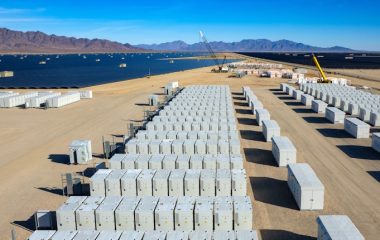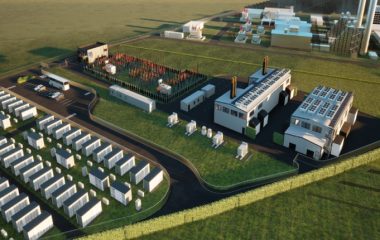
Photo: European Commission
Strategic project IPCEI Hy2Infra got a green light from the European Commission. Seven European Union member countries will provide EUR 6.9 billion in state aid for hydrogen infrastructure, aiming to mobilize EUR 5.4 billion in private investments.
Green hydrogen, produced from water in electrolyzers powered by renewable sources, is still far from competitive against gray hydrogen. The latter is made directly from fossil gas and it is still the only conventional technology. However, developers of green or renewable hydrogen projects in the EU can count on massive subsidies.
The European Commission has approved the third important project of common European interest (IPCEI) to support hydrogen infrastructure. It said the aim is to boost the supply of renewable hydrogen, thereby reducing dependency on natural gas and helping to achieve the objectives of the European Green Deal, REPowerEU plan and the EU Hydrogen Strategy.
The project, called IPCEI Hy2Infra, was jointly prepared and notified by France, Germany, Italy, the Netherlands, Poland, Portugal and Slovakia. The seven member countries can now provide up to EUR 6.9 billion in state aid. The public funding is expected to unlock EUR 5.4 billion in private investments, according to the commissioners.
Hy2Infra strengthens perspective for involved companies including SMEs
Within the 33 subprojects, 32 companies including five small and medium-sized enterprises (SMEs) will participate in the endeavor. They are all active in one or more member states.
Among the participants are Air Liquide, Gasunie, RWE, SNAM, Lhyfe, Thyssengas, Linde and Saipem. The goal of the activities is to enable several economic sectors to reduce their carbon emissions.
IPCEI Hy2Infra will cover a wide part of the hydrogen value chain by supporting:
- the deployment of 3.2 GW of large-scale electrolyzers to produce renewable hydrogen,
- the deployment of new and repurposed hydrogen transmission and distribution pipelines of an overall 2,700 kilometers,
- the development of large-scale hydrogen storage facilities with a combined capacity of at least 370 GWh, and
- the construction of handling terminals and related port infrastructure for liquid organic hydrogen carriers (LOHC) to handle 6,000 tons of hydrogen a year.
Starting from regional clusters
The project will support the gradual emergence of an EU-wide hydrogen infrastructure starting from different regional clusters, the announcement reads. Several large-scale electrolyzers are envisaged to be commissioned between 2026 and 2028, and pipelines should become operational between 2027 and 2029. The overall completion of subprojects is planned for 2029.
IPCEI Hy2Infra complements the first and second IPCEIs on the hydrogen value chain. In July 2022 the EU’s top regulator approved Hy2Tech, which focuses on the development of hydrogen technologies for end users. The European Commission approved the Hy2Use IPCEI, for hydrogen applications in the industrial sector, in September of the same year.
Extra net revenues must be returned to governments
If subprojects covered by the IPCEI turn out to be very successful, generating extra net revenues, the companies will return part of the aid to the respective member state through the so-called claw-back mechanism.
France, Germany, Poland and Portugal included their participation in IPCEI Hy2Infra in their national recovery and resilience plans (NRRPs) and thus can partially fund some of their projects through the EU’s Recovery and Resilience Facility.
Several subprojects are entitled to funds from the EU’s Recovery and Resilience Facility
The commission published the REPowerEU plan in May 2022 with a series of proposed measures to rapidly reduce the dependence on Russian fossil fuels by accelerating the clean energy transition, including a Hydrogen Accelerator. The plan sets a target of 10 million tons of domestic renewable hydrogen production and 10 million tons of imports by 2030, to replace natural gas, coal and oil in hard-to-decarbonise industries and transport sectors.
The European Parliament and Council of the EU have provisionally agreed two months ago to create a hydrogen market. In July 2020, the commission published its EU Hydrogen Strategy, after launching the European Clean Hydrogen Alliance, bringing together the European hydrogen community (industry, civil society, public authorities).
Hydrogen from fossil gas remains market king
Gray and blue hydrogen are both produced from natural gas. The difference is that in the blue hydrogen process, carbon capture and storage (CCS) technology is applied to sequester CO2 and prevent it from reaching the atmosphere.
Gray hydrogen is currently the most prevalent in the energy sector, but the solution results in high emissions. It accounts for 900 million tons of CO2 per year, which is roughly equivalent to the global aviation industry. On the other hand, blue hydrogen relies on a still ineffective and expensive technology.
If the electricity in electrolyzers is obtained from nuclear sources, it is referred to as pink hydrogen, which the European Union has partially classified as sustainable, along with green hydrogen. Green and pink hydrogen are together referred to as clean hydrogen. Proponents of the blue label promote it as low-carbon hydrogen. The H2 molecule occurs naturally, too, as so-called white hydrogen.









Be the first one to comment on this article.